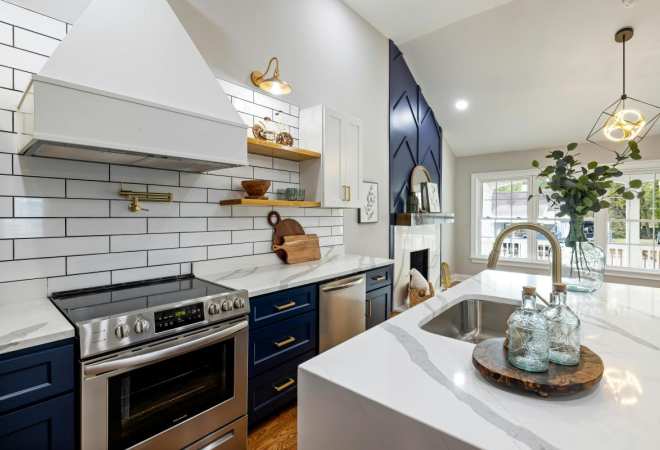Organizing events that are accessible to all attendees, including those with mobility needs, involves meticulous planning and thoughtful consideration of venue selection.
Ensuring a venue is equipped to accommodate guests using mobility aids not only fosters inclusivity but also enhances the overall experience for everyone involved.
This guide explores the essential considerations and practical steps for choosing a venue that meets the diverse accessibility requirements of your guests.
Understanding Accessibility Needs
Before diving into the selection process, it's crucial to have a thorough understanding of the specific accessibility needs of guests who use mobility aids. These aids can range from wheelchairs and walkers to scooters and canes, each requiring different accommodations to ensure comfort and ease of movement:
- Entrances and Exits: Look for venues with wide, step-free entrances equipped with ramps or lifts for wheelchair accessibility. Consider both primary entrances and any secondary access points to accommodate various arrival scenarios.
Example Expansion: Ensure that the ramps or lifts are well-maintained and accessible from all points of approach, providing clear signage and ensuring that they are adequately lit for safety and ease of use, especially in low-light conditions. - Interior Space: Evaluate the venue's interior layout to ensure it offers ample room to maneuver mobility aids comfortably. Avoid tight corners, narrow hallways or cluttered spaces that may impede mobility.
Example Expansion: In addition to spaciousness, consider the layout's flow. Large open spaces are beneficial, but seating arrangements, if applicable, should allow for easy maneuverability around tables and chairs. - Restrooms: Accessible restrooms are critical, featuring grab bars, sufficient space for wheelchair maneuverability and accessible sinks and hand dryers. Ensure that these facilities are conveniently located throughout the venue.
Example Expansion: ADA-compliant restrooms should not only meet spatial requirements but also offer accessible features such as raised toilet seats, properly positioned grab bars and sinks with adequate knee clearance for wheelchair users. - Parking: Adequate, accessible parking spaces close to the venue entrance facilitate convenient access for guests with mobility aids. Ensure these spaces are well-marked and located near accessible pathways leading to the venue.
Example Expansion: Consider the proximity of accessible parking to the venue's main entrance and whether the route from parking to the entrance is free from obstacles such as curbs or uneven surfaces, which can pose challenges for mobility aid users.
Understanding these specific needs forms the foundation for selecting a venue that can provide the necessary accommodations to ensure a seamless and enjoyable experience for all attendees.
Key Considerations When Choosing a Venue
1. Accessibility Features:
- Entrances: Prioritize venues with accessible entrances that are well-maintained and clearly marked. Consider both primary and secondary entrances to accommodate different arrival points.
Example Expansion: Implementing automatic doors with wide clearance can significantly enhance accessibility, allowing wheelchair users and those with mobility aids to enter and exit independently without assistance. - Interior Layout: Opt for venues with spacious interiors and clear pathways, minimizing obstacles that could hinder mobility aid users. Evaluate the layout to ensure it allows for easy navigation.
Example Expansion: When assessing interior layout, consider not only the space but also the placement of furniture, equipment and decorative elements to ensure they do not obstruct pathways or impede movement for guests using mobility aids. - Restrooms: Verify that all restroom facilities are ADA-compliant, with accessible stalls, grab bars and adequate space for maneuvering mobility aids.
Example Expansion: Regular maintenance and cleanliness are also essential factors to consider, ensuring that accessible restroom facilities are not only compliant but also hygienic and well-stocked with necessary amenities. - Elevators or Lifts: For venues with multiple floors, ensure reliable elevator access that accommodates wheelchairs and other mobility aids.
Example Expansion: In addition to functionality, consider the visibility and ease of use of elevator controls, ensuring they are positioned at accessible heights and accompanied by clear signage for intuitive navigation.
2. Location and Surroundings:
- Transportation: Choose venues located near accessible transportation options or provide information on accessible transportation services for guests requiring mobility aids.
Example Expansion: Partnering with local accessible transportation providers or offering shuttle services from nearby accessible transit hubs can enhance convenience and accessibility for attendees traveling to the event. - Outdoor Areas: If the event includes outdoor spaces, ensure pathways are smooth, paved and free from obstacles to facilitate easy mobility for all attendees.
Example Expansion: Providing shaded areas or rest spots along outdoor pathways can enhance comfort for guests using mobility aids, ensuring they have opportunities to rest and recharge during outdoor activities.
3. Venue Staff and Policies:
- Training: Inquire whether venue staff are trained in assisting guests with mobility aids. A knowledgeable and supportive staff enhances the overall guest experience by providing prompt assistance as needed.
Example Expansion: Beyond basic training, consider ongoing education and awareness initiatives for staff to stay updated on best practices and evolving accessibility standards, ensuring continuous improvement in guest service and support. - Policies: Review venue policies related to accessibility and guest accommodations. Ensure policies align with your event’s inclusive goals and meet the specific needs of guests with mobility aids.
Example Expansion: Transparency in policy communication is essential. Clearly outlining accessibility features and available accommodations on event invitations or registration materials can empower guests to make informed decisions and prepare accordingly.
4. Flexibility and Communication:
- Customization: Some venues may offer flexibility in layout or accommodations to better meet the needs of guests with specific mobility requirements.
Example Expansion: Collaborating with venue management on customizing seating arrangements or adjusting event layouts can optimize accessibility and enhance guest comfort, tailoring the event experience to meet diverse mobility needs effectively. - Communication: Openly discuss accessibility requirements and expectations with venue management. Clear communication ensures that necessary accommodations are understood and effectively implemented.
Example Expansion: Establishing a dedicated point of contact or accessibility coordinator within the event planning team can streamline communication and facilitate proactive problem-solving for any accessibility-related concerns or inquiries.
Additional Tips for a Seamless Experience
- Advance Planning: Initiate venue selection well in advance of the event date to allow ample time for necessary modifications or accommodations. Early planning also allows for thorough consideration of accessibility needs and proactive implementation of solutions.
Example Expansion: Creating a comprehensive timeline that includes milestones for accessibility assessments, site visits and finalizing accommodation arrangements can ensure that no detail is overlooked and that preparations remain on track leading up to the event. - Site Visit: Conduct a thorough site visit to assess accessibility features firsthand. Evaluate pathways, restroom facilities, parking arrangements and overall venue layout to ensure they meet the needs of guests using mobility aids.
Example Expansion: During site visits, engage directly with venue staff and accessibility experts, seeking their input and recommendations for optimizing venue accessibility. Taking detailed notes and photographs can aid in later planning and decision-making processes. - Guest Feedback: Encourage guests with mobility aids to provide feedback on their experience. Their insights can offer valuable perspectives and guide future event planning to further enhance accessibility.
Example Expansion: Implementing post-event surveys or feedback forms specifically tailored to accessibility can solicit meaningful input from guests, facilitating continuous improvement and demonstrating a commitment to ongoing accessibility enhancements.
Conclusion
Selecting a venue that prioritizes accessibility for guests with mobility aids is essential for creating inclusive and memorable events. By comprehensively considering accessibility features, location suitability, venue policies and effective communication with venue staff, event organizers can ensure a welcoming environment for all attendees. Thoughtful planning and attention to detail not only fulfill legal obligations but also demonstrate a commitment to inclusivity and diversity within the event community.
Embracing accessibility enhances the overall success and inclusiveness of any event, leaving a positive and lasting impression on all who attend. By proactively addressing the needs of guests requiring mobility aids, event organizers can foster an environment where everyone feels valued, respected and able to participate fully in the event experience.
are you a bride or groom-to-be?
We'd love to plan with you on weddingday-online.com. Let's get started!
are you a wedding extraordinaire?
Join WeddingDay Magazine in inspiring brides by partnering with us! See how here.







Join the conversation
Log in or register to post comments